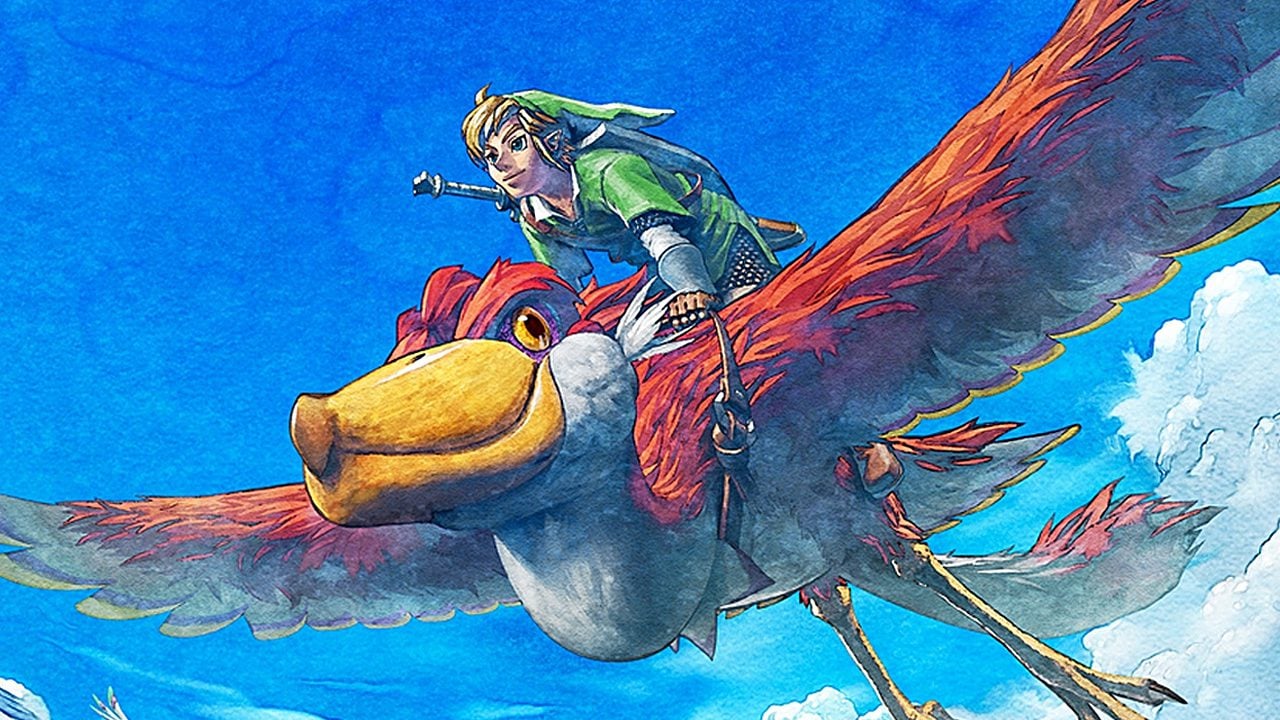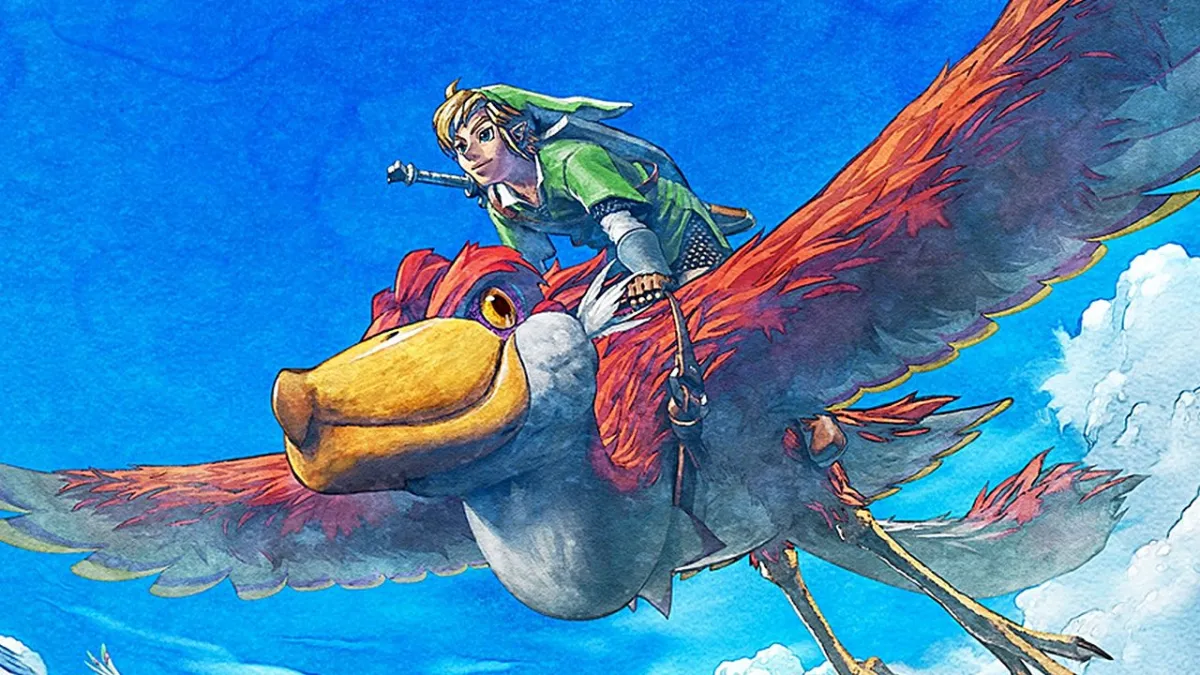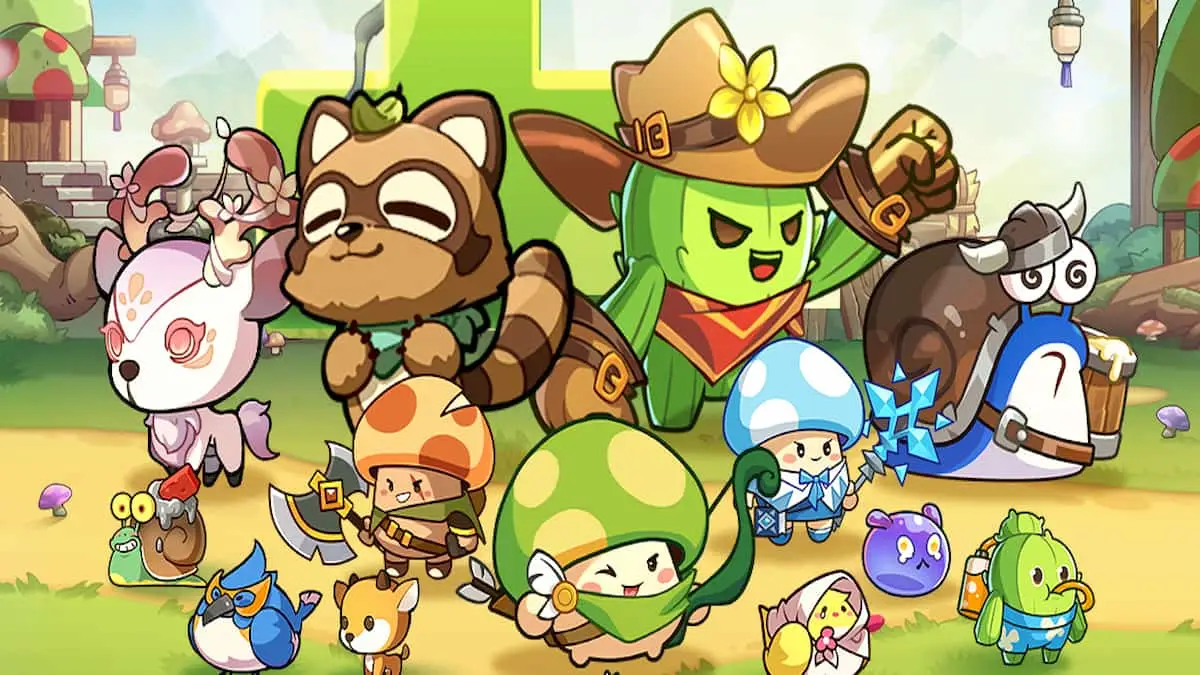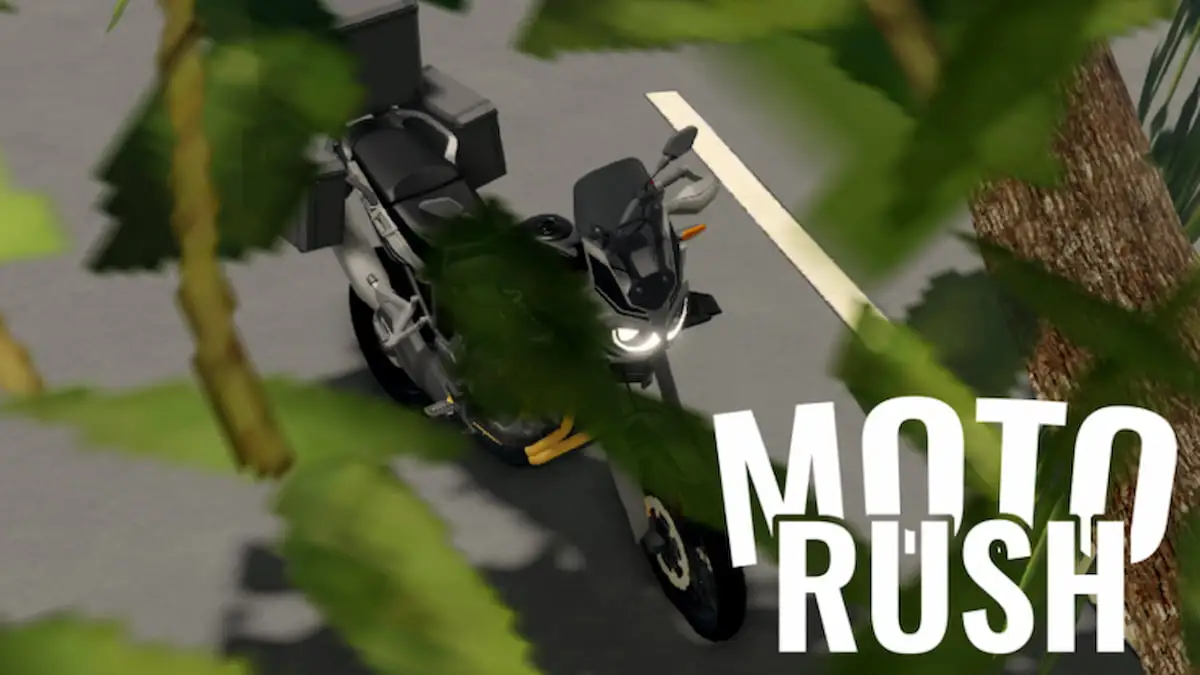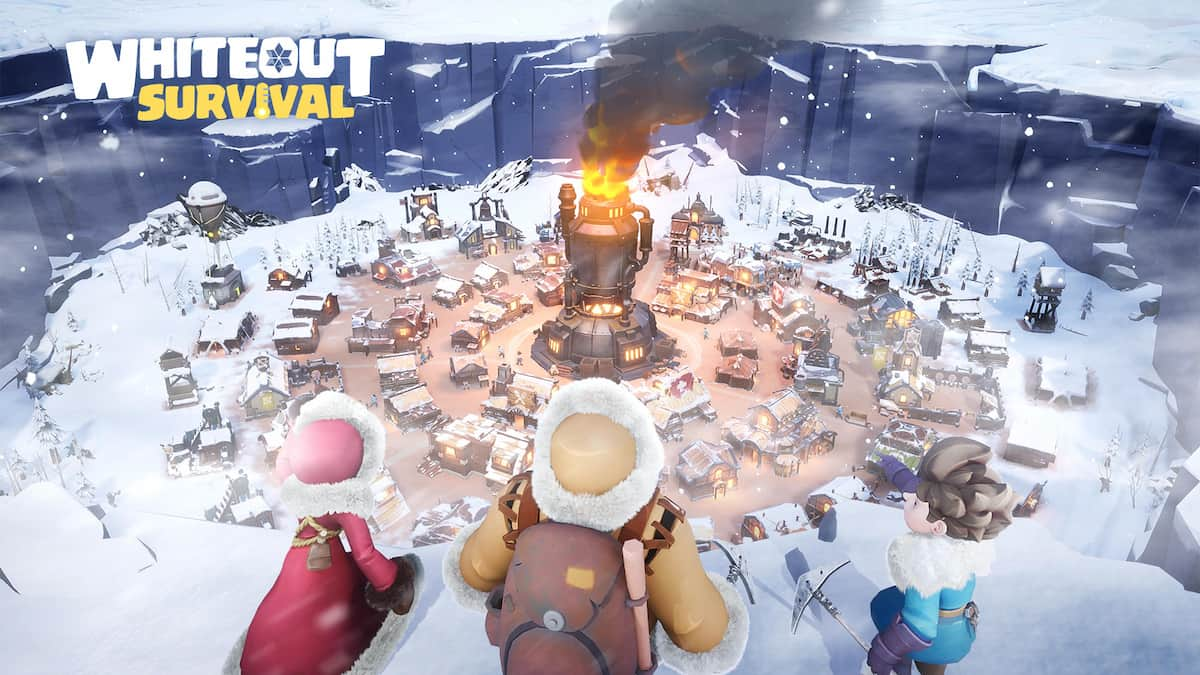No thanks Fi, I got it from here
I’ll be blunt: The Legend of Zelda: Skyward Sword had a lot of underlying problems when it was released, and I’ll touch on them in this review of the HD remaster. But perhaps the most egregious sin of all was robbing players of a base level of exploration with Fi.
Serving as the equivalent of Ocarina of Time‘s Navi; Fi is your companion throughout the adventure, and for whatever reason, proceeds to essentially spoil the entire game, every step of the way. After she ruined a final dungeon puzzle when I originally played it back in 2011, I had to put down my gold-plated Wiimote and just laugh. It summed up the tug of war of enjoyment and pain I experienced with Skyward Sword.
Thankfully, Nintendo got it right this time on Switch. There’s still issues! But they’re not nearly as prevalent, and the lack of them allows the best parts of it to truly sing.
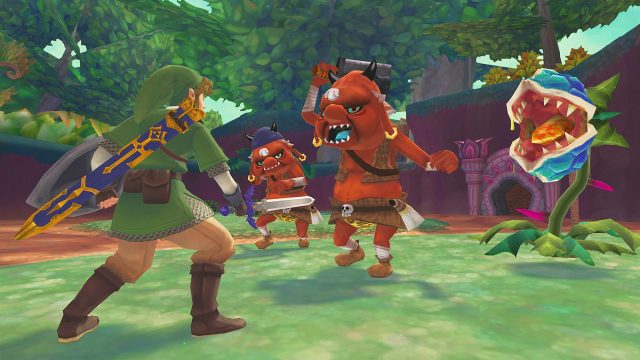
The Legend of Zelda: Skyward Sword HD (Switch)
Developer: Nintendo
Publisher: Nintendo
Released: July 16, 2021
MSRP: $59.99
I apologize in advance if this review is partially a gripe-fest for the original, but it’s kind of unavoidable!
My issues with Skyward Sword started with its intro, which was long, grating, and kicked off the trend of over-tutorializing. The opportunity to skip over cutscenes in the HD edition is fantastic (especially for the first hour or so), as is the slightly shortened tutorial. It just feels so much better now. We didn’t need our hand held in 2011, and we don’t need it now: the lack of trust in players after shipping numerous 3D iterations of Zelda was baffling. I’ll get back to the topic of how tutorials were streamlined, but for now let’s head right into the controls, because I know that’s what you’re dying to hear.
Skyward Sword HD, at a base level, controls a lot like prior 3D Zeldas. You can dash and auto-jump off/clamber up ledges, which is how you’ll get around nearly every environment. But now, we have the option for tactile, non-motion controls. How I’ve waited for this day.
[brid video=”826257″ player=”12899″ title=”The%20Legend%20of%20Zelda%20Skyward%20Sword%20HD%20Destructoid%20Review” duration=”511″ description=”undefined” uploaddate=”2014-03-17″ thumbnailurl=”https://www.destructoid.com/wp-content/uploads/2021/07/zeldthumb.png” contentUrl=”//cdn.brid.tv/live/partners/10260/sd/826257.mp4″]
Gone are the inexplicable forced waggle traversal controls of the original. Simply pressing a button to shimmy on a ledge or a vine? Or diving with my trusty bird mount? Yes please. I would have liked to have just pressed a button to do these basic commands the entire time, but the option wasn’t there on the Wii edition. Now in 2021, folks who enjoy the motion controls can still use them with two Joy-Con, and those who don’t can use regular controls or a Pro remote. It’s glorious.
To use your sword with non-motion you’ll flick the right analog stick in the direction you want your sword to strike, and tap to thrust. To spin (a classic Zelda move) you’ll move the stick left, right, left (and similarly for a fatal dive blow, with up, down, up). It can be finnicky at first, but I got used to it. It’s just a joy to be able to use traditional controls in Skyward Sword, and the juice is worth the squeeze. I also played much of it in pure portable form, with a purpose. I wanted to see how the game, once touted as requiring motion to work, would pan out. And it’s just fine! Unlike many games before it, Skyward Sword does a fantastic job of justifying all of the Switch’s different combos of play methods, to the point where all of them feel slightly different in their own way (like using motion controls when in tabletop mode with the kickstand).
But these tactile controls do come at a cost, depending on how you look at it. Since the right stick is tied to swordplay at all times, you need to hold down the “L” button to manipulate the camera. If you want to dash around and move the camera at the same time, you’ll have to hold L, use the right stick to look around, and utilize the left stick to move. It can get claw-handy, in that you might need to use some dexterity to pull it off consistently. With years of practice I’m fine, but some of you may not be for extended periods of time. The good news is motion controls still exist (again, using two Joy-Con like a Wiimote and nunchuk) and allow free manipulation of the right stick to control the camera.

Now, I did use motion controls for a portion of the game, and I have to say, the motion swordplay still holds up. It was the absolute best part of the original, and a lot of the other unnecessary forced waggle brought the experience down for me. Interestingly, I found the Joy-Con to be as reliable, if not more so than the Wiimote with Motion Plus hardware. One of my biggest problems with the Wii version was deadzoning bombs (you can either raise the remote to toss them or lower it to roll them), which went much smoother on Switch.
I mean, I like options. Some sequences were more fun with Joy-Con motion (like boss fights). Some weren’t. But whenever I was ready to swap it took two seconds to press a button on my desired controller and change it up. It’s what I always wanted out of the Wii: options, with a portable mode to boot. I know some people loved the motion controls, and the good news is that they’re fully intact here with less fiddly hardware.
In spite of the control revelation, it does have some of the same structural problems. This is essentially how each zone of the adventure works:
- Follow a path to the dungeon
- Collect three or more things throughout the area you just walked through (one of them is usually right near the area where this sidequest begins) to unlock said dungeon
- Enter the dungeon, defeat the boss, unlock a new area
- Eventually come back to this same area and unlock a new path/dungeon in it

Several of these steps are familiar for Zelda fans, or action-adventure/RPG fans in general. But the key phrase here is collect, as a portion of Skyward Sword is a collectathon, with mixed results. Some portions can be shrugged off and actually do a good job of funneling you into zones you wouldn’t have otherwise found. A few sections require a degree of collecting that would rival some Donkey Kong 64 areas, and feel like a relic of the past. Remember how Twilight Princess HD toned down the collection bits by removing a few tears here and there? That would have gone a long way for several moments in Skyward Sword HD.
Yet, with all the Switch refinements, this tedium is a lot easier to forgive. Not only is it going to be more fun for a lot of people to actually run around with standard controls, but the dungeons are still absolutely fantastic, and some of the Zelda team’s all-time best work. Skyward Sword can also get really tricky at times with its puzzles, which is why it was infuriating to have Fi pop in and spoil hints or outright solutions in the original. Fi does still appear via cutscenes and explains some obvious things with obnoxious nonsensical AI math. But now she’s primarily tied to a down d-pad press, and won’t come out during actual gameplay/exploration bits for the most part.
That’s a good thing, because the zones, like the dungeons, are similarly fantastic when you can explore them at your own pace. The Lanayru Desert time gimmick is one of my favorite concepts in any Zelda, and the “eureka!” moments when solving puzzles or figuring out the next place to go now have actual meaning without Fi bugging you every few minutes. The formulaic setup has a positive spin on it in the sense that when all is said and done, you’ll remember these zones for a good while (a forest, a volcano, and a desert), because you’ve seen them multiple times from different angles.
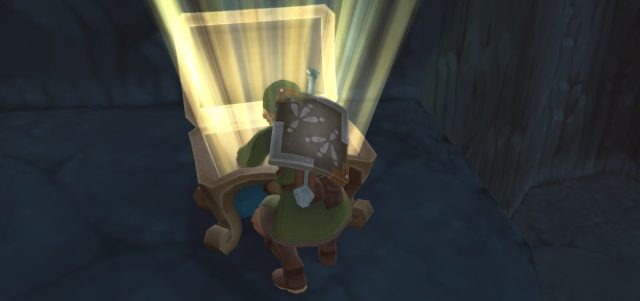
Skyward Sword‘s biggest strength is that it’s also just a unique take on Zelda as a whole. It has a more intimate focus on Zelda and Link as human beings, which is fairly rare (at least to the level it’s done here), and some of the cast (like your boy Groose) is fleshed out further than your typical Zelda, making them more than caricatures. Plus, it tried to add some interesting mechanics like an upgrade system for your gear, packed in tons of personality-filled sidequests, and offered a home hub you can get attached to in Skyloft: which really links the world together. I found myself doing some sidequests I had never engaged in with the original because I was less frustrated as a whole: which is mission accomplished, as far as I’m concerned.
Zelda: Skyward Sword was a weird game to assess in 2011, much less today. It had a lot of great ideas undercut by some questionable design choices, but to some, it was the best Zelda ever made. I understand that $60 for a remaster of a 2011 game is a big ask, but this is the definitive version of a flawed yet fun adventure that should be part of any Zelda rotation.
[This review is based on a retail build of the game provided by the publisher.]
